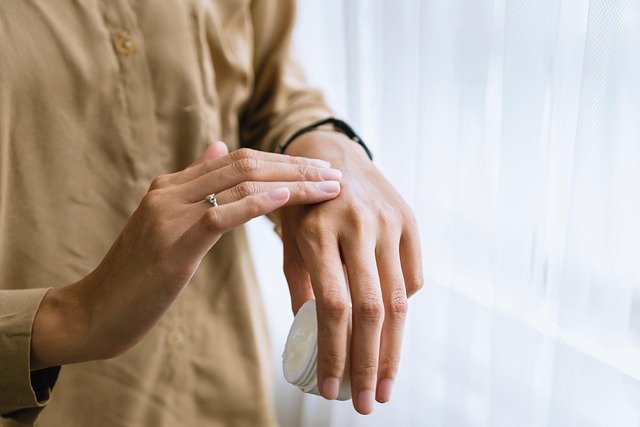Effective treatments for cellulite and stretch marks
Are cellulite and stretch marks bothering you? Discover effective treatments and proactive strategies that can help you manage these conditions and boost your confidence! Cellulite and stretch marks are common skin concerns that affect many individuals, regardless of age, gender, or body type. In this article, we delve into the science behind these conditions, their causes, and a variety of treatments available, from home remedies to medical procedures. You may be wondering, what causes cellulite and stretch marks? Are there effective treatments that really work? We’ll uncover the differences between these two conditions and discuss the importance of body positivity in the conversation around them. Additionally, we’ll highlight practical tips to manage their appearance and maintain healthy skin.

What are cellulite and stretch marks, and how do they differ?
Cellulite and stretch marks are two distinct skin conditions that often cause concern for many individuals. Cellulite appears as dimpled or lumpy skin, typically on the thighs, buttocks, and hips. It occurs when fat deposits push through the connective tissue beneath the skin, creating a characteristic “orange peel” or “cottage cheese” texture. On the other hand, stretch marks are long, narrow streaks or lines that develop on the skin when it’s stretched quickly. They commonly appear during pregnancy, rapid weight gain or loss, or growth spurts in adolescence. While cellulite is related to fat distribution, stretch marks are the result of skin stretching and damage to collagen and elastin fibers.
What causes cellulite and stretch marks to develop?
The development of cellulite is influenced by various factors, including genetics, hormones, diet, and lifestyle choices. Women are more prone to cellulite due to the structure of their connective tissue and higher estrogen levels. Age also plays a role, as skin becomes less elastic over time. Stretch marks, meanwhile, occur when the skin is stretched beyond its capacity to bounce back. This can happen during pregnancy, puberty, or rapid weight changes. Hormonal changes, particularly increased cortisol levels, can also contribute to the formation of stretch marks by weakening skin’s elasticity.
Which lifestyle changes and natural remedies can help reduce cellulite?
Several lifestyle modifications and natural remedies may help minimize the appearance of cellulite. Regular exercise, especially strength training and cardiovascular activities, can help tone muscles and improve overall body composition. A balanced diet rich in fruits, vegetables, lean proteins, and whole grains can support skin health and reduce inflammation. Staying hydrated is crucial for maintaining skin elasticity. Dry brushing, a technique that involves brushing the skin with a natural-bristle brush, may help stimulate circulation and lymphatic drainage. Topical treatments containing caffeine or retinol can temporarily tighten the skin and improve its texture. However, it’s important to note that while these methods may help, they are not guaranteed to eliminate cellulite completely.
What professional treatments are available for cellulite reduction?
For those seeking more dramatic results, several professional treatments are available for cellulite reduction. These include:
-
Radiofrequency therapy: This non-invasive treatment uses heat to break down fat cells and stimulate collagen production.
-
Ultrasound therapy: High-frequency sound waves are used to target and break down fat cells.
-
Subcision: A minimally invasive procedure that involves releasing the fibrous bands pulling down on the skin.
-
Laser treatments: Various laser technologies can be used to target cellulite, including Cellulaze and Cellfina.
-
Carboxytherapy: Carbon dioxide is injected beneath the skin to improve circulation and break down fat cells.
It’s important to consult with a qualified dermatologist or plastic surgeon to determine the most appropriate treatment for your specific case.
How can stretch marks be effectively managed and treated?
While completely eliminating stretch marks is challenging, several treatments can help improve their appearance:
-
Topical treatments: Over-the-counter creams containing ingredients like retinoids, hyaluronic acid, or vitamin C may help improve skin texture and color.
-
Microneedling: This procedure uses tiny needles to create micro-injuries in the skin, stimulating collagen production and improving skin texture.
-
Chemical peels: These can help exfoliate the skin and promote cell turnover, potentially reducing the appearance of stretch marks.
-
Laser therapy: Various laser treatments, such as fractional laser therapy, can help improve the color and texture of stretch marks.
-
Microdermabrasion: This technique exfoliates the skin and may help reduce the appearance of newer stretch marks.
Early intervention is key when it comes to managing stretch marks, as newer marks tend to respond better to treatment than older ones.
How can one cope with body image challenges related to cellulite and stretch marks?
Coping with body image challenges related to cellulite and stretch marks is an important aspect of overall well-being. It’s crucial to remember that these skin conditions are incredibly common and do not define a person’s worth or beauty. Practicing self-compassion and focusing on overall health rather than appearance can help improve body image. Surrounding yourself with positive influences, including supportive friends and body-positive media, can also make a significant difference. If body image concerns are causing significant distress, consider speaking with a mental health professional who specializes in body image issues. They can provide strategies to improve self-esteem and develop a healthier relationship with your body.
In conclusion, while cellulite and stretch marks are common skin concerns, there are various treatments and strategies available to manage their appearance. From lifestyle changes and natural remedies to professional treatments, individuals have multiple options to explore. However, it’s equally important to cultivate a positive body image and remember that these skin conditions are a normal part of many people’s lives. By combining practical treatments with a healthy mindset, you can work towards feeling more confident and comfortable in your skin.
This article is for informational purposes only and should not be considered medical advice. Please consult a qualified healthcare professional for personalized guidance and treatment.




